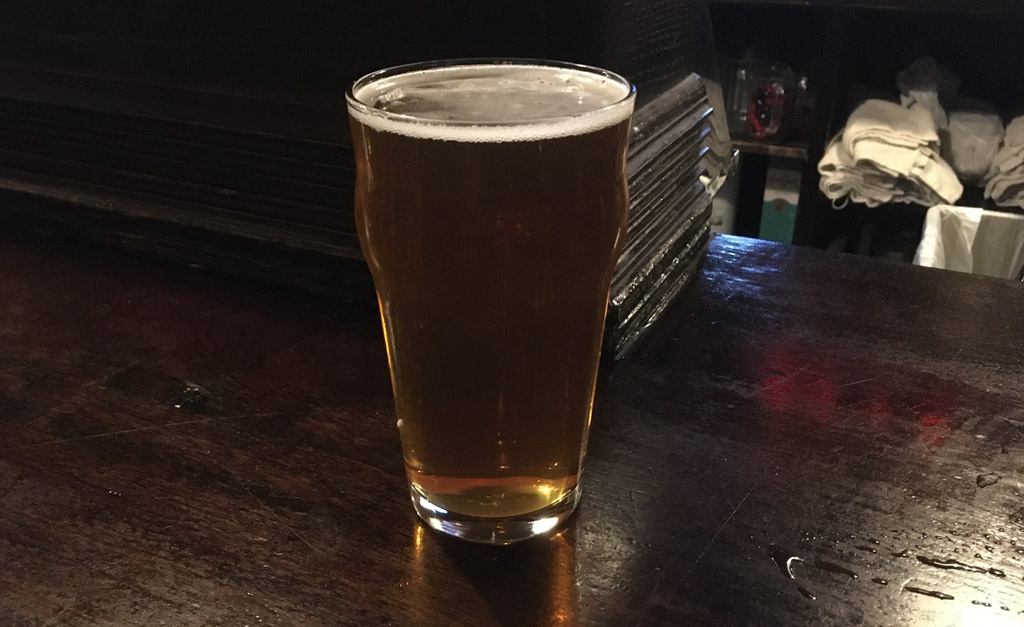“She breweth noppy ale,
And maketh thereof poorte sale
To travellers, to tynkers,
To sweters, to swynkers,
And all good ale drinkers.”
– John Skelton, The Tunning of Elenor Rumming (ca. 1508-1523)
One miserable February day, I popped in to a large beer bar that I hadn’t been to in a while. I had just picked up a package at the post office, containing a 1966 book titled Liquor License: an Ethnography of Bar Behavior — perhaps the only sociological study of human behavior in pubs and taverns that has ever been conducted and successfully published. Having finally acquired a copy of the first and only printing of this rather scarce book, I spontaneously decided to begin paging through it in the most appropriate setting.
After sitting at the bar for a minute or two, a server appeared from somewhere among the dozens of empty tables behind me, and asked what I’d like. I ordered a pint of my favorite beer, and she dutifully pulled it, brought it to me, and disappeared.
But my mood evaporated, when I saw what was passing for a pint.
It was the third time in this establishment, out of three, when I had been moved to question the fairness of the pour. I would happily accept fifteen ounces, or fourteen, or maybe even thirteen, in this glass that is designed to hold sixteen ounces at the brim. But this server was only able to manage about 11 ounces of actual liquid, if that. I conjured up the patience to wait for a bit, to see how much beer might settle out of the copious foam. It didn’t improve by much.
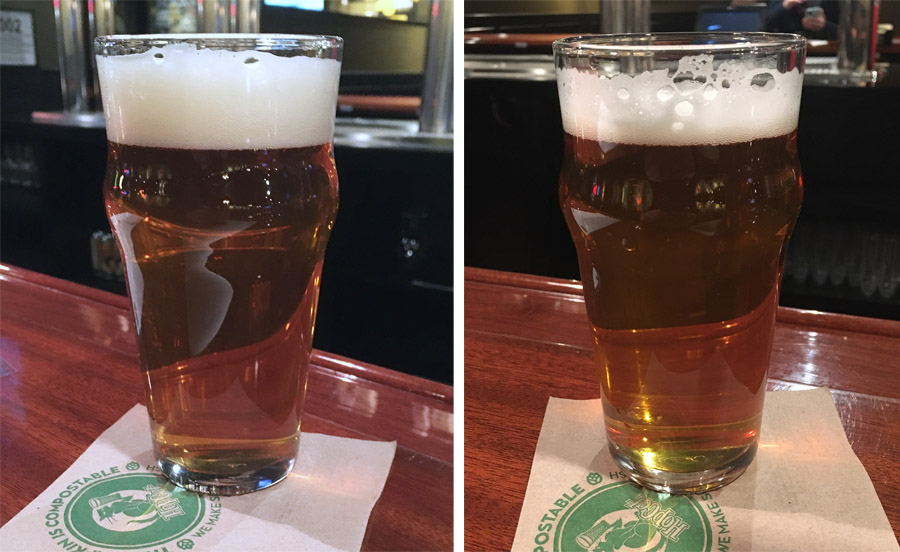
Feeling a bit like I’d stepped onto the set of a bad sitcom, I resisted delivering my line — yes, I could have asked for a top-off, but this pour was so spectacularly bad, that it was almost good.
There is a certain circularity in life, where opposites become one another: go too far East, and you’ll end up in the West; or as Blake said: Excess of sorrow laughs, excess of joy weeps. Perhaps this small event was offering a glimpse at the Dao of the universe — the yin becoming the yang, as it were. Was my third consecutive dissatisfaction here just part of a longer path to satisfaction?
I took a sip, and consulted the book. There seemed to be nothing on the topic.
That is when I vowed that, before the year was out, I would seek that satisfaction: by finally getting to the bottom of the matter of the questionable pour.
The hospitality industry
Beer, coffee, and other drinks are some of the few items whose measure we routinely allow to be determined haphazardly at the point of sale. We’d never let a grocery cashier guesstimate the weight of a cabbage at 29 cents a pound, but somehow it’s ok for a 7-dollar drink at the beverage counter. At a coffee shop, we’re often asked, “Do you want room for cream?” and we trust the barista to decide how much coffee will be deducted, without any knowledge of our typical taking of cream. In this case at least, the cost of cream is probably similar enough to the cost of good coffee that the proprietor has little incentive to sway the transaction. But with beer, the difference is mostly air, which is worth decidedly less than beer.
I always find it a bit embarrassing to ask for a top-off — and why should a guest ever be made to feel embarrassed? Of hundreds of passersby, I was the one who chose to step in, as a voluntary guest of an establishment whose first purpose is to welcome guests and make them feel comfortable. So, how was that going? Rather than feeling warmth and welcome from a host whose confident presence embodies the mission of the establishment, I felt as if I had interrupted a random staff member who just happened to be standing nearest the taps, and would have preferred to be standing somewhere else. Not far beneath that worn veneer was a dark undercurrent: a glimpse of an establishment’s struggle between its public identity as a place of welcome, and its private identity as a profitmaking enterprise — something a seeker of hospitality should never be burdened with.
“You feel at once that you are looked upon by the strict eye of business,
not by the eye of hospitality.”
– “Innkeeping as a Fine Art,” The Spectator, September 9, 1876.
It may be that the manager is having a hard time finding staff who take pride in pouring a drink. Or maybe they’re not being trained to pour a drink at all. Or maybe the management is purposely gaming the drink portions to see what they can get away with. I’m sure that these backroom situations exist throughout the industry, but the customer is not supposed to see them. It’s a bit like visiting a good friend and finding them in the midst of a domestic argument — they welcome you anyway, as they must, but now you’d rather be somewhere else; yet it would be impolite to leave, since it would only draw more attention to the situation. Awkward.
So is it them, or is it me?
I know that some beer drinkers prefer a bit of foam. But that’s beside the point — no matter how much or how little foam you prefer, you are never asked if you want room for foam, nor how much, and the amount you will actually get is highly unpredictable. As one who prefers a pint that’s pretty close to a pint, am I wrong to feel shorted by a two-inch raft of foam?
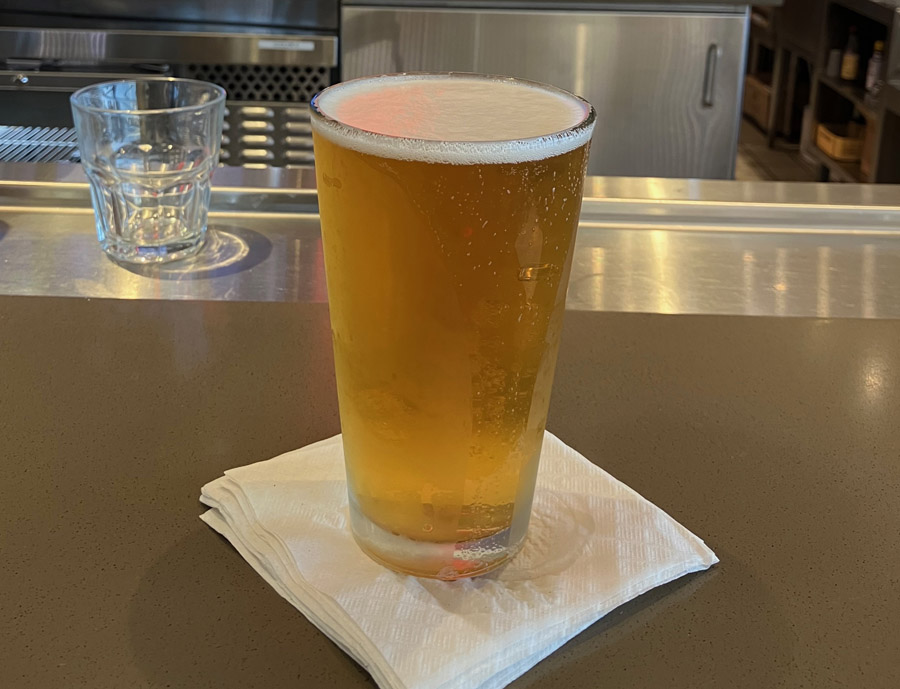
Hammurabi and the alewife
A pint by any other name would still be a pint, but assigning its name to a smaller measure is a tempting path to fraud. Weights and measures are one of the few things that human cultures have consistently agreed are worth regulating. Although agreement on the specific units continues to be elusive, the principle that the customer should not be cheated, nor the seller profit from his deception, is prominent in some of the earliest known conceptions of law.
The Babylonian code of Hammurabi famously set down several such laws. This must have given the early decipherers of cuneiform much to discuss at the pub, because several deal specifically with the conduct of tavernkeepers. One is commonly interpreted to specify a punishment for giving short measure:
108. If an ale-wife does not accept grain for the price of liquor but accepts silver, or if she reduces the value of beer given against the value of grain received, they shall convict that ale-wife and cast her into the water.
– Code of Hammurabi [2]
At first, the idea of dunking the bartender for giving short pours seems to suggest that the Babylonians had a sense of humor about the matter. But this was not a carnival dunk tank — it was the Euphrates river, in a time when swimming lessons were not commonly offered at the Y. Many would not have made it back to shore alive.
Touchiness about pulling the proper portion of porter was also known in Elizabethan times. In an old book about the inns of old England, we hear of the extinct profession of “ale-conner,” a civil servant of sorts who had a possibly enviable job:
“The manorial authorities appointed special officers, called Ale-conners, whose duty was, not only to assay the beer, but to inspect the measures in which it was sold; and of all the offenses punished by fine in the manorial courts, none was so common as that of selling ale in false measures.”
And in the same book we learn of at least one way this fraud might be perpetrated:
“… medieval ale-wives were not above putting pitch in the beer measure, thereby lessening the quantity of the vended quart.”
– F. W. Hackwood, “Inns, Ales and Drinking Customs of Old England,” 1909.
Thus the skill and honesty of the server could have a lot to do with one’s choice of pub. Around the year 1610 we hear of Ben Jonson, probably the second best-known Elizabethan poet next to Shakespeare, making reference to his favorite server, in front of His Majesty, no less:
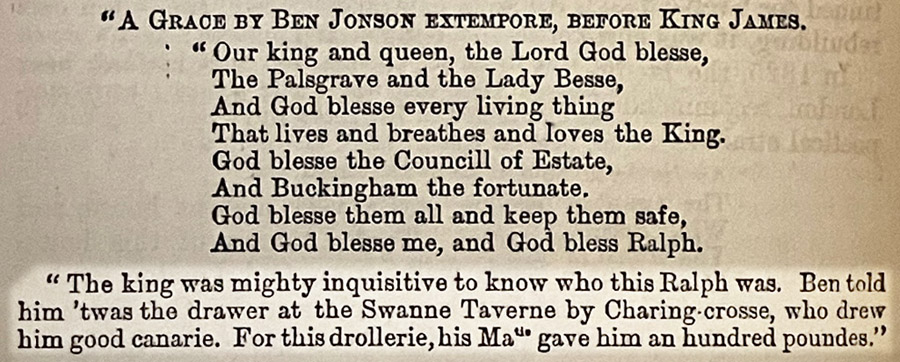
Here we learn that a drawer was a bartender, who “draws” beverages from the tap; canarie was a wine of Spanish origin, also known as sack. Jonson’s biographers as well as other contemporary works repeatedly refer to Ralph, as “the honest drawer that drew him good sack” (emphasis mine).
It took another four hundred years of similar drollery on the matter before standardized fill lines were finally added to bar glassware in Britain and much of continental Europe. I’ve seen some examples on various travels, a couple of which are shown below. While they don’t seem to be used consistently, I welcome them when I see them, because it relieves me from wondering if I’ve had a fair pour.
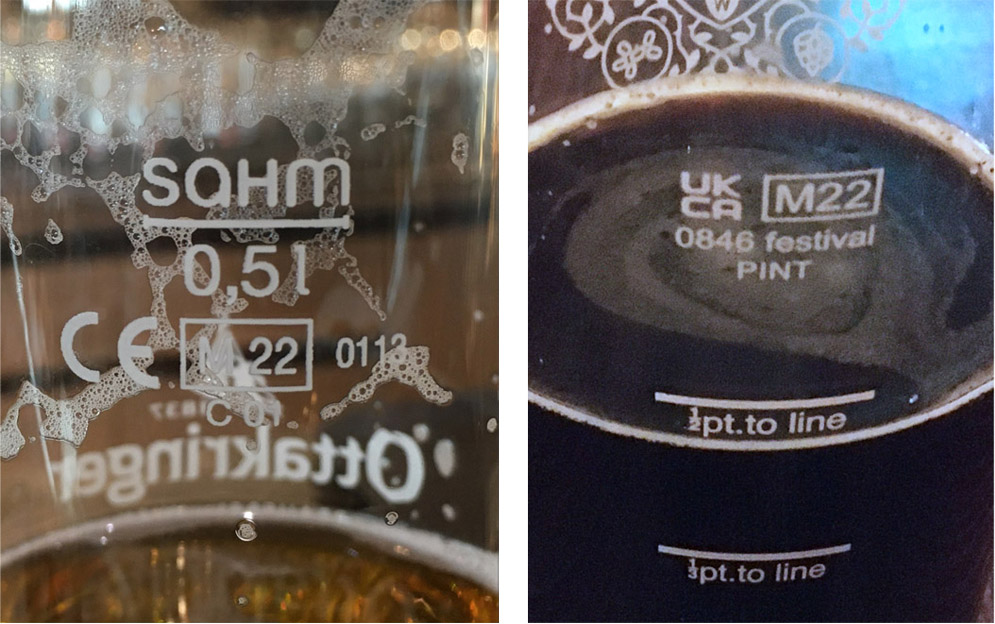
You decide
So what does a missing ounce or three actually look like? After years of grousing and mild guilt about suspecting a shortish pour, I wanted to have a visual, and to put some numbers on the matter.
So let’s go to the kitchen, pour a couple pints, and see what we can come up with.
The most common beer glass in the United States is the standard conical pint glass, which is designed to hold 16 fluid ounces when filled to the brim. Sorting through my years-long accumulation of conical pint glasses (and becoming somewhat embarrassed to learn that I have more than twenty), I looked for one that would give a perfectly true measure.
In theory, 16 fluid ounces of water at 60 degrees Fahrenheit should weigh 473.7 grams. With the help of a digital kitchen scale, I tested a few glasses and found that their volume was often slightly short, with some holding as little as 460 grams before it threatened to start dribbling over the rim. I began to wonder if these glasses were really all the same. My conclusion was that they are the same, more or less; but there is some natural variation in glass thickness that leads to small differences in volume.
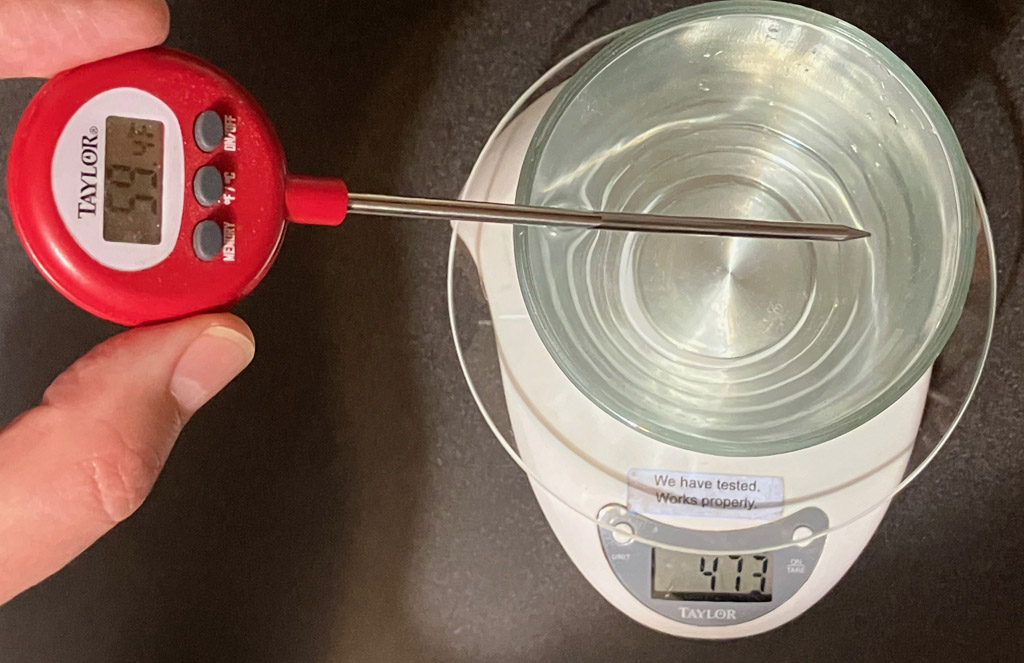
Once I found one that held exactly the right amount, I emptied it, dried it, and filled it to the brim with chilled beer (Founder’s Centennial IPA, if you must know), pouring very carefully to avoid forming a head. I managed to get 481 grams of beer into the glass. Beer is slightly heavier than water, especially when chilled, so it made sense that it would weigh a bit more than the water. This meant that a fluid ounce of this beer weighs 30 grams, so I could see what it looks like to have 15 ounces, 14 ounces, and so on, by simply deducting 30 grams at a time. The results are shown below.
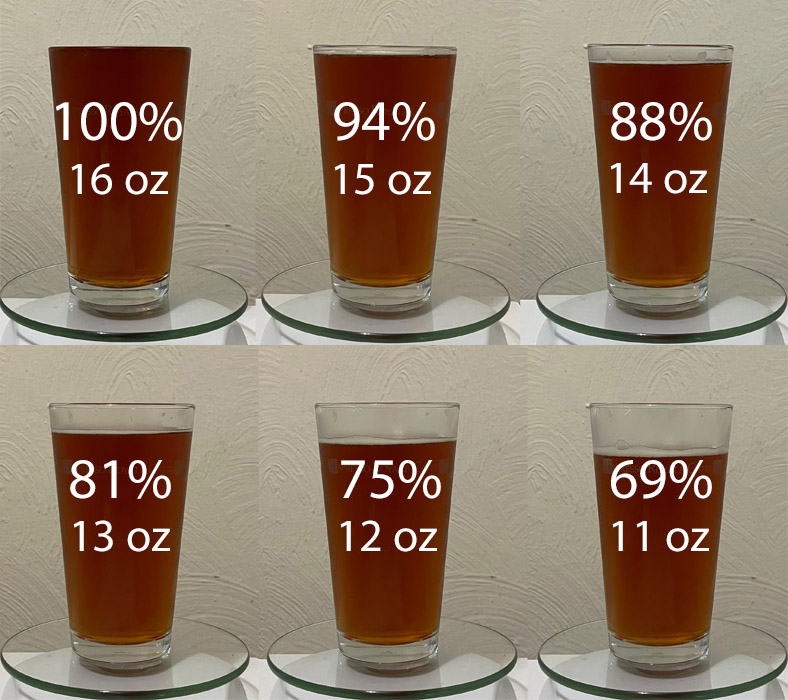
Wow, a missing ounce or two doesn’t look like much! Most would consider any of the top images to be a fair pour, despite missing up to a full two ounces, or 12 percent. By the time you’re missing three ounces, you’ve still got what many would consider a decent-enough pour — but it’s only 81 percent of a pint. Fair, or not? And I think most of us will agree that 12 ounces or less is hardly a pint at all.
So, this is a start — but the pints shown above don’t have much foam, and beer is rarely served that way. So I repeated the experiment, allowing a foamy head to form. To manage the foam, I poured in reverse order, starting with a careless but exact 11-ounce pour (330 grams) that foamed all the way to the top, and then adding 30 grams at a time. Because foam settles a bit over time, I tried to add the beer such that the foam would momentarily rise slightly above the brim, and took the photo only after it had receded to about level with the brim — exactly how a bartender would present it.
Visually, the results were very much the same. Each glass below contains exactly the same weight of beverage as in the corresponding glass above. The liquid levels are only very slightly lower.
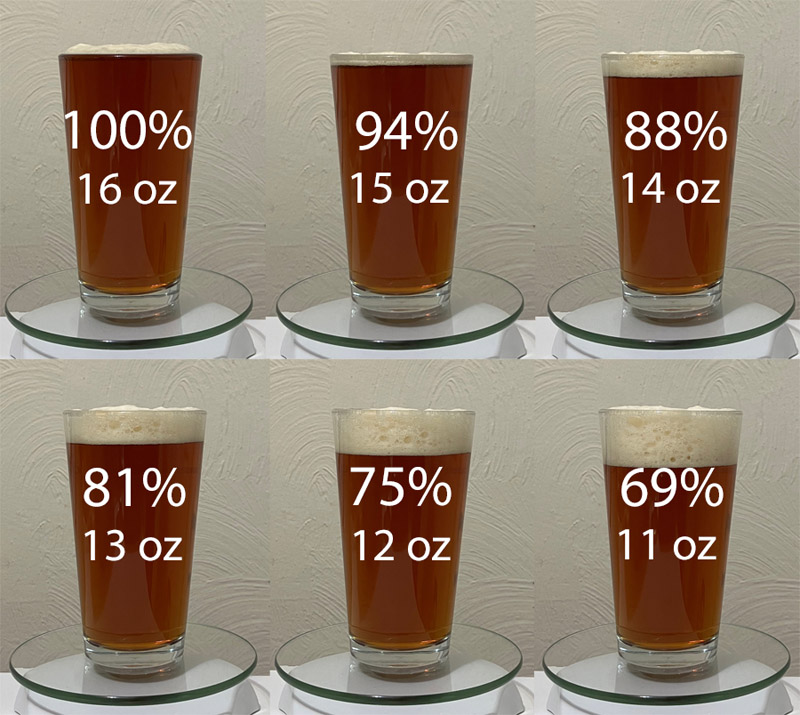
Enlightened
Walking into the many establishments I’ve visited, it seems that hosting a bar is not always understood as the art that it historically has been, but is sometimes approximated as just another service job that can be interchangeably filled by just about anyone who happens to be working that day. In this way, a bar can utilize a never-ending rotation of indifferent temporaries whose presence endows the establishment with about as much gravitas as a bored customer greeter at Walmart. Thus it should come as no surprise, I suppose, that the art of the pour might be lost on so many of those we encounter behind the bar — and so in many cases, we are on our own.
Our F. W. Hackwood, who has already contributed significantly to our understanding, said it well:
“In ‘the good old times’ it was entirely a man’s own fault if he drank bad beer or failed to obtain his money’s worth.”
– Hackwood, p. 105.
…and were he not writing more than a hundred years ago, I’m sure he would have extended the sentiment to the bars of today, as well as to the ladies who are now welcome within.
I will stay away from judging what constitutes a good pour or a bad pour — opinions seem to vary. But to this end, these visuals say a lot about what we’re getting, and not getting, with the standard conical pint glass.
With this image now residing on my phone, I hope that it will serve to either confirm or defuse any suspicions of poor service, bringing some peace of mind both to me and to my companions — who deserve something better than another rant about the history of the short pour.
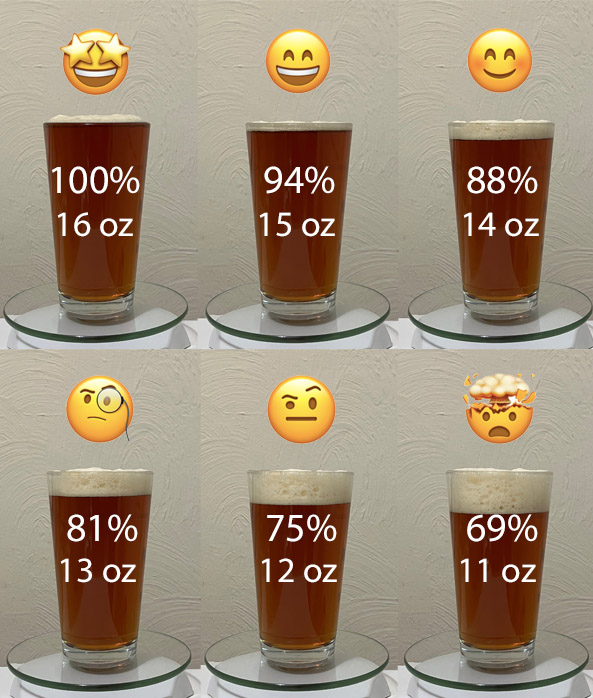
Article and photos Copyright 2023.
To be notified of new articles, visit https://whatshallweweird.com/subscribe/
References
[1] Cavan, Sherri: Liquor License: An Ethnography of Bar Behavior. Aldine Publishing Company, Chicago (1966).
[2] https://academic.kellogg.edu/williamsjon/Hammurabi.htm
